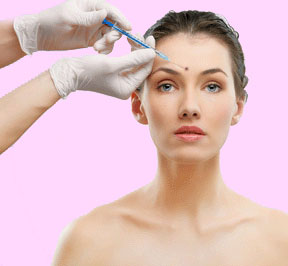
Mole removal is a particular facet of birthmark removal in some cases and a completely different matter in others. Mole treatment is one of the more common services sought from dermatologists and plastic surgeons worldwide. Moles can be congenital or might be developed later in life. Regardless, these skin growths can be physically troublesome and psychoemotionally damaging, depending on many individualized factors.
Many people demonstrate a genetic predisposition towards mole growth, while almost anyone can have moles appear idiopathically or due to exposure to excessive UV radiation found in sunlight. Regardless of why or how moles appear, many people find them unappealing or downright ugly, especially when they exist on the face or other highly visible bodily location.
Removing moles can be done at home, but is often best left to a professional dermatologist or plastic surgeon. This essay explores the most effectual methods of mole elimination that are currently available in the aesthetic medical sector.
Mole Removal Indications
Moles are usually harmless. However, some moles can be problematic or even be the harbingers of skin cancer. Any irregularly-shaped mole, textured mole, large mole or mole which appears suddenly may be cause for alarm and should be examined by a qualified physician.
Given that a mole is not deemed to be malignant; it can be removed easily and usually permanently with minimally invasive care.
Cancerous or precancerous moles will obviously have to be removed, but continuing care may also be necessary once laboratory analysis is returned to determine the level of malignancy.
Moles may form in areas that can be painful or prevent normal functionality. However, the main reason cited for the desire to get rid of moles is certainly the undesirable aesthetics associated with the unwanted skin mark.
Mole Treatment Options
There are several home-based products for removing moles and skin tags. These chemicals literally burn away the mole over time and usually work well for those with patience and a bit of bravery. Although these products are generally safe, they are contraindicated for some conditions and locations.
Some moles should not be treated at home, especially if they are deeply rooted. Doing so may cause problematic and permanent scarring. Additionally, if you are unsure about the possibility of skin cancer in a mole, it is always best to have it examined by a doctor first.
Professional removal of moles can be accomplished with lasers in some cases, chemicals in other cases and open surgery in virtually all cases.
The best method of removing the mole will be determined by the treating physician. This determination will involve the nature of the mole itself, the anatomical location and other circumstantial factors.
Most professionally-applied mole treatments are both safe and effectual, eliminating the mole and preventing any scaring during the healing process. Just be sure to discuss any risks of therapy with your doctor before agreeing to undergo care.
Mole Removal Conclusion
Be wary of relying on home-based products, especially for moles which may be early warning signs of cancer. Treating these skin issues at home can have dire consequences.
If you are unsure what to do about mole elimination, at least talk to your doctor to get some good advice. If you do decide to pursue profession removal, the results should be fantastic and the procedure should be well tolerated in most cases.
If the mole exists on the face, or any area prone to scarring, it is always best to consult a plastic surgeon, since these doctors are experts in providing the safest and most aesthetic results from the entire range of skin treatments.
For more information about mole care and general skin treatments, consult with a board certified plastic surgeon or dermatologist near you.



